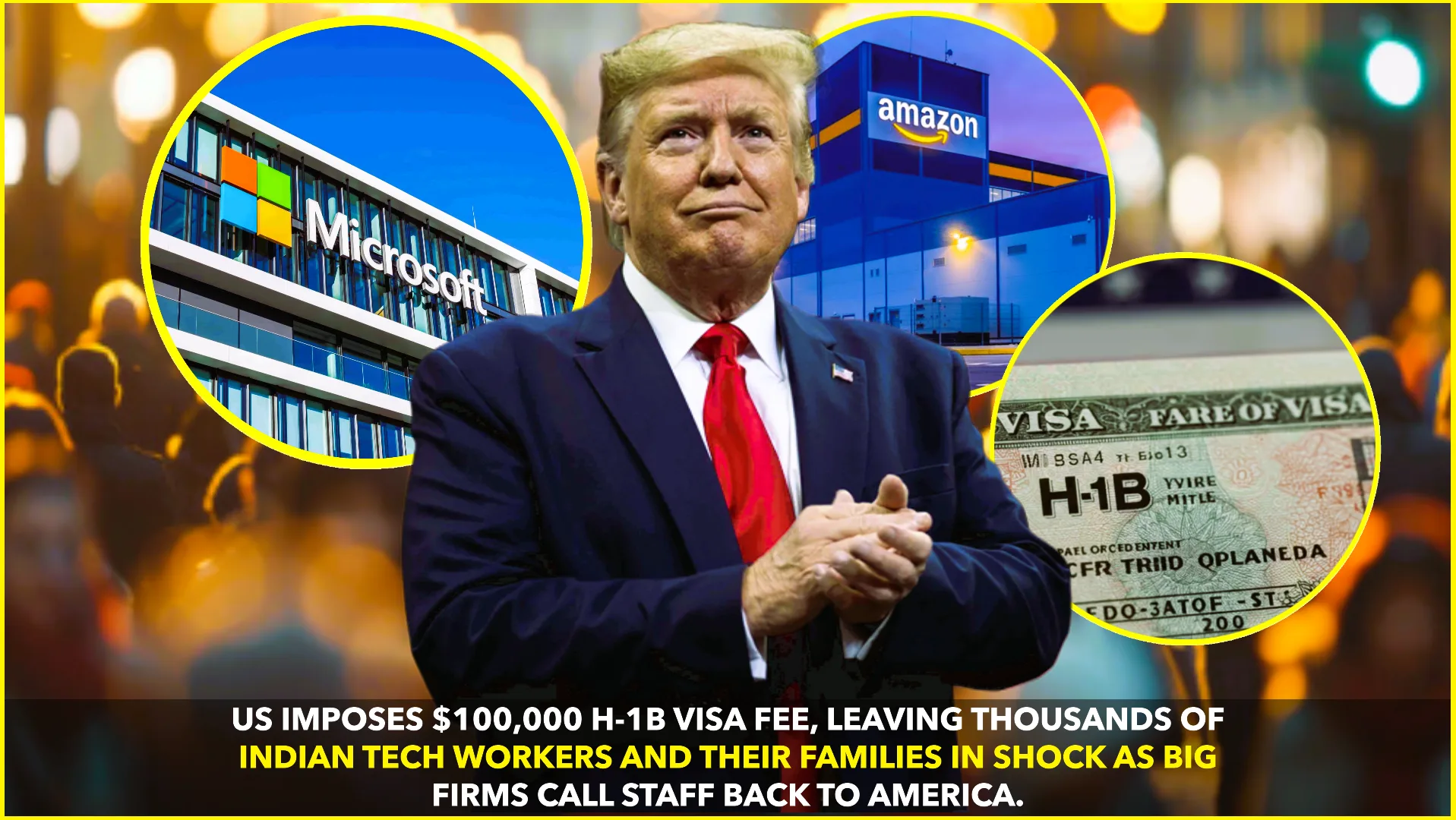Thousands of Indian tech professionals across the globe are grappling with uncertainty after the Trump administration announced a sweeping change to the United States’ H-1B visa program. Starting September 21, foreign workers on H-1B visas will face a staggering $100,000 annual fee, a move that has sent shockwaves through the Indian diaspora in America and beyond.
The sudden policy shift has triggered emergency responses from major employers. Tech giants like Microsoft and Amazon, along with banking powerhouse JPMorgan, have reportedly instructed their Indian employees stationed outside the US to fly back before Sunday to avoid complications in their visa status.
For thousands of Indian families, the H-1B visa isn’t just a piece of paperwork—it represents stability, opportunity, and a pathway to the so-called American Dream. With one sudden rule, however, that dream now feels precarious.
Why the H-1B Visa Matters to Indians
The H-1B program allows US companies to employ foreign professionals in specialty occupations like technology, finance, and healthcare. For decades, Indians have dominated this visa category, consistently accounting for nearly 70% of all H-1B holders.
For Indian tech workers, the visa is often a gateway to high-paying jobs in Silicon Valley and Wall Street. It also opens opportunities for their families, from quality education for children to long-term settlement options.
The new fee, however, changes the cost dynamics drastically. “This isn’t just about money,” said an H-1B holder in New Jersey who requested anonymity. “For many of us, it’s about whether we can even afford to continue living here. Companies may hesitate to sponsor us, and our families’ futures hang in the balance.”
Industry Reaction
The tech industry has expressed deep concern. Microsoft CEO Satya Nadella, himself an Indian immigrant, is reportedly lobbying behind the scenes, arguing that the policy could hurt American innovation. Amazon has also warned that the rule might disrupt its workforce and delay projects.
Financial institutions like JPMorgan, which rely heavily on global talent, are scrambling to assess costs. Analysts estimate that the new fee could force companies to rethink hiring strategies, possibly shifting more jobs offshore rather than paying steep visa costs.
The Trump Administration’s Rationale
The Trump administration has framed the move as part of its “America First” agenda, aimed at reducing reliance on foreign workers and protecting US jobs. Officials argue that the fee will discourage companies from overusing the H-1B program and push them to hire more Americans.
But critics say the decision is shortsighted. “This will backfire,” said immigration expert Sheela Murthy. “American companies need global talent to remain competitive. By pricing out skilled workers, the US risks losing its edge to countries like Canada or Singapore, which are actively welcoming immigrants.”
Human Impact on Families
Beyond the economic calculations, the emotional toll on Indian families is immense. Many have spent years building lives in America, with children who barely know India outside of vacations. Now, uncertainty looms over whether they can stay.
Parents worry about uprooting their kids from schools, mortgages suddenly feel like risky commitments, and long-term plans like green card applications appear more fragile than ever.
One Indian couple in California shared, “We’ve given 12 years of our lives to the US. Now we are being asked to gamble $100,000 every year just to stay. It feels like we’re being pushed out.”
What Lies Ahead
Legal challenges are expected, with business groups preparing lawsuits against the sudden policy. Some experts believe courts may block or delay the implementation, as happened with past immigration rules.
Meanwhile, alternative destinations like Canada, the UK, and Australia are expected to attract more Indian professionals. These countries already have favorable immigration pathways for skilled workers and could benefit from America’s hardline stance.
For now, thousands of Indian workers remain in limbo—booking last-minute flights, holding anxious conversations with employers, and weighing whether the American Dream is still worth chasing.
Source
The New York Times, The Economic Times, Business Standard










